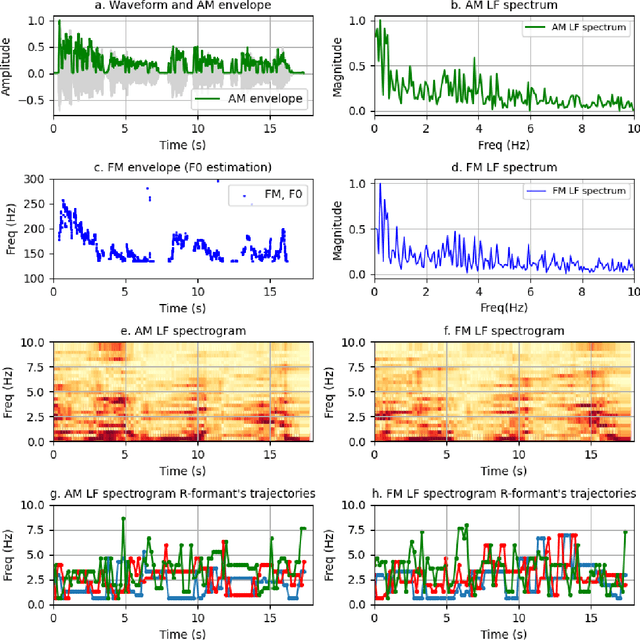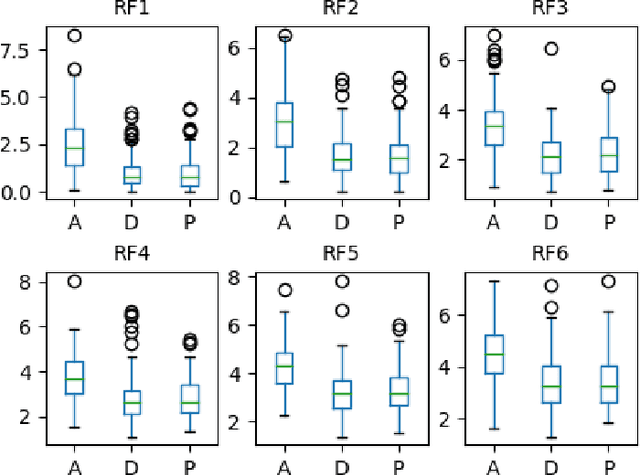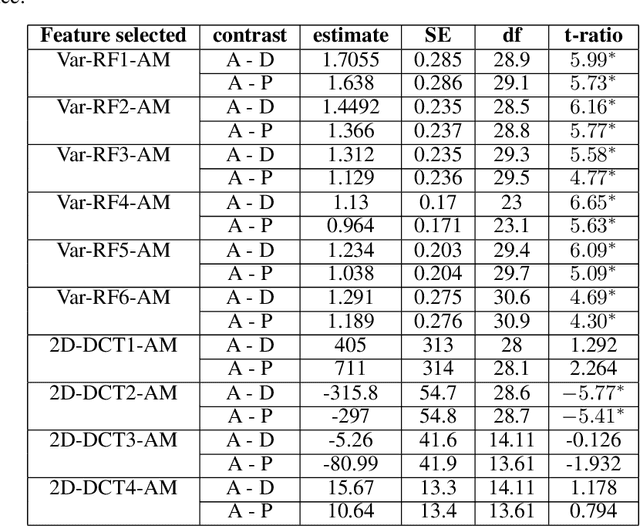Parismita Gogoi
Analyzing long-term rhythm variations in Mising and Assamese using frequency domain correlates
Oct 26, 2024



Abstract:The current work explores long-term speech rhythm variations to classify Mising and Assamese, two low-resourced languages from Assam, Northeast India. We study the temporal information of speech rhythm embedded in low-frequency (LF) spectrograms derived from amplitude (AM) and frequency modulation (FM) envelopes. This quantitative frequency domain analysis of rhythm is supported by the idea of rhythm formant analysis (RFA), originally proposed by Gibbon [1]. We attempt to make the investigation by extracting features derived from trajectories of first six rhythm formants along with two-dimensional discrete cosine transform-based characterizations of the AM and FM LF spectrograms. The derived features are fed as input to a machine learning tool to contrast rhythms of Assamese and Mising. In this way, an improved methodology for empirically investigating rhythm variation structure without prior annotation of the larger unit of the speech signal is illustrated for two low-resourced languages of Northeast India.
Exploring rhythm formant analysis for Indic language classification
Oct 08, 2024Abstract:This paper reports a preliminary study on quantitative frequency domain rhythm cues for classifying five Indian languages: Bengali, Kannada, Malayalam, Marathi, and Tamil. We employ rhythm formant (R-formants) analysis, a technique introduced by Gibbon that utilizes low-frequency spectral analysis of amplitude modulation and frequency modulation envelopes to characterize speech rhythm. Various measures are computed from the LF spectrum, including R-formants, discrete cosine transform-based measures, and spectral measures. Results show that threshold-based and spectral features outperform directly computed R-formants. Temporal pattern of rhythm derived from LF spectrograms provides better language-discriminating cues. Combining all derived features we achieve an accuracy of 69.21% and a weighted F1 score of 69.18% in classifying the five languages. This study demonstrates the potential of RFA in characterizing speech rhythm for Indian language classification.
 Add to Chrome
Add to Chrome Add to Firefox
Add to Firefox Add to Edge
Add to Edge